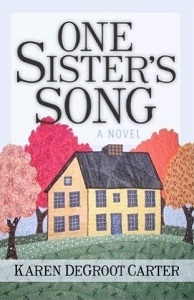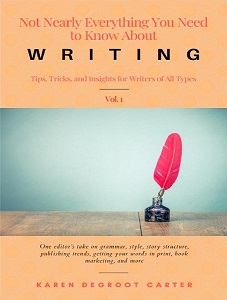How Medium.com Has Helped Me Build My Author Platform
When I stumbled across Medium.com during a random Google search 10 months ago, I had no idea it would soon provide a new home for my writing and introduce me to thousands of other writers and potential new readers. I also didn’t know that by the end of the next 10 months I’d have nearly 900 followers and new publishing credits in 14 different publications. I’d also compose and publish my first ebook, Not Nearly Everything You Need to Know About Writing: Tips, Tricks, and Insights for Writers of All Ages (Vol. 1), featuring the writing-related Medium posts I’d written on everything from punctuation and grammar to tools to find a literary agent or connect with bloggers.
How Medium works
Medium is an ad-free publishing platform that hosts dozens of publications focused on a variety of topics. Writers can self-publish posts as often as they like; there is no need to be published in a publication of any kind. Once you have a profile page set up, it serves as your blog, featuring chronological previews of your posts regardless of where they are published on Medium. The nice thing about getting posts published in publications, of course, is increased reach. Some Medium publications have significant followings, and getting published in their pages provides immediate access to those readers.
Often when my first stab at a submission doesn’t pan out, I’ll self-publish a post, and I’ve been pleasantly surprised to find such posts picked up by other publications that weren’t even on my radar. As someone who has lived through the era of mailing printed submissions and waiting eons for replies, I greatly appreciate the efficiency Medium provides.
But how much does it cost?
Medium membership costs $5/month or $50/year. A free option allows you to follow other writers, bookmark stories, and publish your own work but limits the number of stories you can read each month. It also restricts you from reading or publishing anything “behind the paywall.” When a writer who is a member publishes a post behind the Medium paywall, they can earn money on it based on the amount of time readers spend reading it.
Is it possible to earn a steady income on Medium? Suffice to say most Medium contributors do not, but that’s not for lack of trying. A good percentage of Medium stories are written by writers who are trying to crack the code to become a profitable Medium contributor, and many others are written by writers who claim they have done just that—and provide proof of the thousands of dollars they’re raking in.
Checkered history
Medium certainly has its critics. A lot has happened with the platform since this detailed NiemanLab.org post, “The long, complicated, and extremely frustrating history of Medium, 2012–present,” was published in early 2019, but it provides a terrific overview of Medium’s origins and challenging, seemingly ever-changing, approach to its mission of serving as a democratic outlet for writers.
The biggest complaints throughout Medium’s history, including since its latest changes, involve how difficult it is for Medium contributors to earn significant income on the platform. And yet, like any successful online network, it holds such promise that many who begin posting on it ultimately become hooked, driven at least in part by the fear of missing out on the impressive followings and income streams some contributors do enjoy.
I honestly doubt I’ll ever make much money on Medium, but as long as I’m making more than the annual $50 membership fee, I’ll continue to be a member. Every time I publish a post, short story, or poem on Medium, I have a new link about my work to share on Facebook, Twitter, and LinkedIn. And every time I publish something, I have the opportunity to connect with readers, whether via social media or directly on Medium, about the topic at hand, whether that’s punctuation or grammar or a non-writing-related topic such as gentle parenting, social media, or racial identity. Since I find such connections so rewarding, I consider the cost of Medium to be minimal compared with the return it brings me.
—
Karen DeGroot Carter is an author and editor from Syracuse NY and a graduate of Syracuse University who lives in Denver. She has contributed posts, reviews, poetry, and profiles to sites such as BlogCritics, The Compulsive Reader, and Literary Mama and is now an active contributor on Medium.com. She’s also had short stories place or win honorable mentions in Writer’s Digest and Glimmer Train competitions.
One Sister’s Song, Karen’s first novel, was published by a small press in 2002 and reprinted in 2004. She self-published her ebook, Not Nearly Everything You Need to Know About Writing: Tips, Tricks, and Insights for Writers of All Ages (Vol. 1), in 2020.
Visit Karen at her website karendegrootcarter.com, on Twitter at @kdegrootcarter, or at www.facebook.com/karendegrootcarter.
About One Sister’s Song
Audrey Conarroe, a biracial woman, never planned to move back to h er predominantly white hometown, but when her sister died and she was named guardian to her young nephew, Julian, she had no choice but to do just that. Eight months later, Audrey prepares to sell her sister’s old farmhouse when a series of discoveries forces her to rethink everything she’s ever assumed about love, race, and respect.
er predominantly white hometown, but when her sister died and she was named guardian to her young nephew, Julian, she had no choice but to do just that. Eight months later, Audrey prepares to sell her sister’s old farmhouse when a series of discoveries forces her to rethink everything she’s ever assumed about love, race, and respect.
About Not Nearly Everything You Need to Know About Writing: Tips, Tricks, and Insights for Writers of All Ages (Vol. 1)
 This first ebook in a series on grammar, style, story structure, publishing trends, getting your words in print, book marketing, and more serves up valuable insights to help you write more clearly and professionally, find a literary agent, and get your work published.
This first ebook in a series on grammar, style, story structure, publishing trends, getting your words in print, book marketing, and more serves up valuable insights to help you write more clearly and professionally, find a literary agent, and get your work published.
Category: Contemporary Women Writers

 by
by 




























